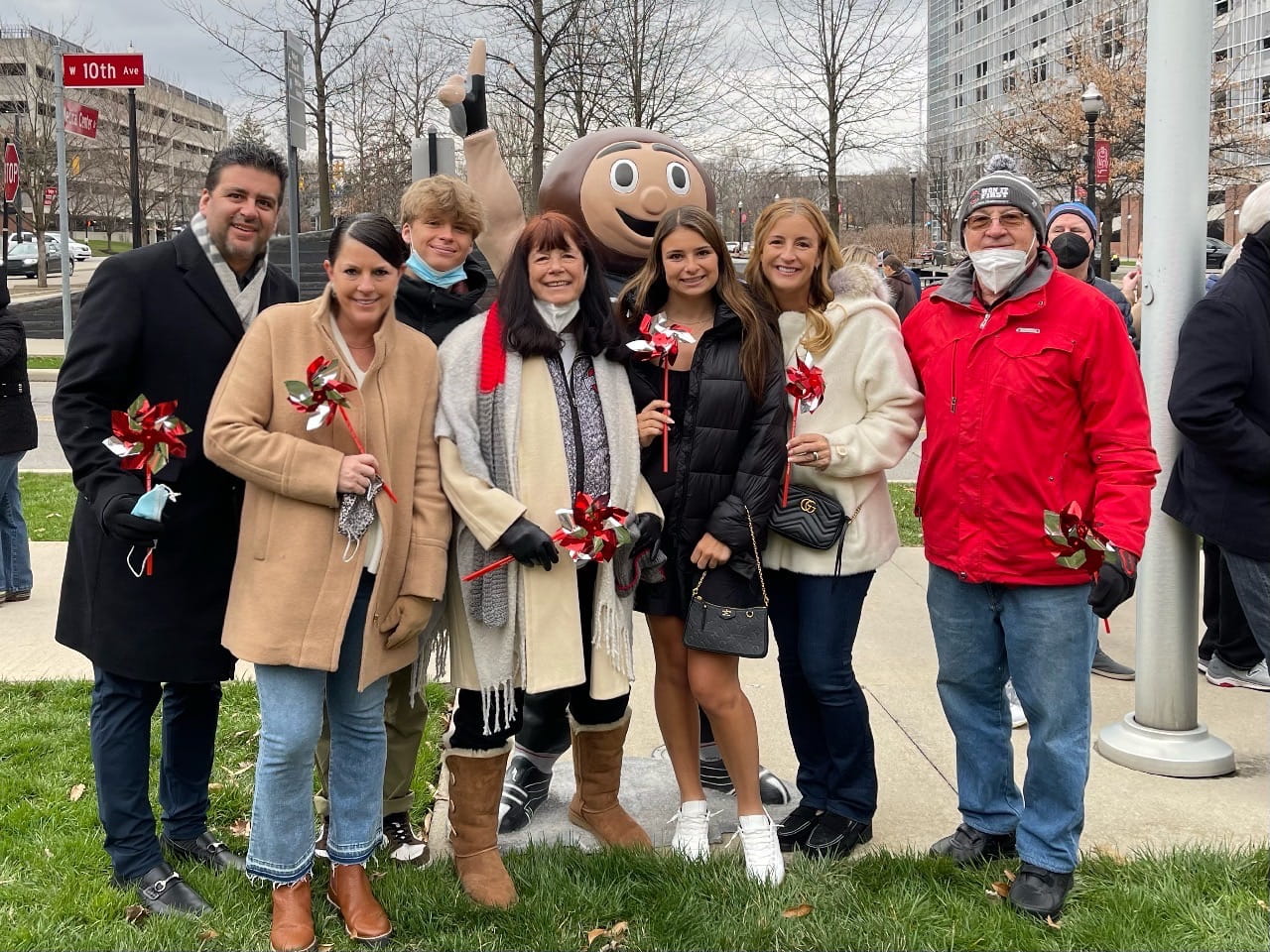A man’s decision to give life through organ donation, plus philanthropic support to The Ohio State University Wexner Medical Center’s Comprehensive Transplant Center, allowed Margo Griffith to survive.
 Margo (center, wearing scarf) and Bill (far right) Griffith with their family.
Margo (center, wearing scarf) and Bill (far right) Griffith with their family. Margo spent the last 43 days of 2018 at the hospital. Her liver was failing, and she wouldn’t be able to survive without constant treatment. On the last day of 2018, thanks to generosity of all kinds, she received a liver transplant at the Ohio State Comprehensive Transplant Center.
Starting on January 1, 2019, Margo began the next chapter in her life story. She and her husband, Bill, are proudly watching their six grandchildren grow and become young adults. Margo’s grandchildren keep her and Bill busy with honor society inductions, soccer matches, baseball and basketball games, and dramatic productions. Margo and Bill recently celebrated their 50th anniversary and own a small farm in Canal Winchester, Ohio.
“I can’t imagine missing what I’ve seen,” says Margo, who has received follow-up care from transplant surgeon Dr. Kenneth Washburn, and has ongoing support from transplant hepatologist Dr. Lanla Conteh and coordinator Julie Luebke.
Grateful for the care Margo had received, the Griffiths wanted to meet the family of her liver donor, but also support the transplant program and patients at the Ohio State University Medical Center.
“My donor is a hero in one way, but we feel the doctors and surgeons are the other half of the hero,” said Margo.
The Griffiths learned about the Collaboration for Organ Perfusion, Protection, Engineering & Regeneration (COPPER) Laboratory, co-directed by Sylvester Black, MD, PhD, and Bryan Whitson, MD, PhD.
The COPPER Lab’s goal is to develop ways to sustain donated organs to allow more time for assessment and potentially repair, so that no donor organs are discarded, thereby growing the number of organs available for transplantation.
Presently, transplant patients can endure long waits for organs of appropriate quality and size; unlike Margo Griffith, not everyone receives an organ in time. Right now, organs must be procured, assessed and transported quickly. Time is of the essence; in general, hearts and lungs must be transplanted within four hours, livers eight hours, pancreases 12 hours and kidneys within 24 hours.
“We wanted to help,” says Margo. She and Bill support the research at the COPPER Lab so people’s stories don’t have to end, so they can go on to add more chapters, just as Margo did.
More than 100,000 people in the United States are waiting for an organ donation. Every 10 minutes, another person joins the line, and every day 17 people die waiting.
The Ohio State Comprehensive Transplant Center is working to change these statistics through revolutionary research and world-class patient care. Give the gift of the next chapter - more graduations, birthdays, and anniversaries - by donating today.
How you can Help
Donate Online
Donate by Mail
The Wexner Medical Center Development Officec/o The Ohio State University Foundation
P.O. Box 736096
Chicago, IL 60673-6096
